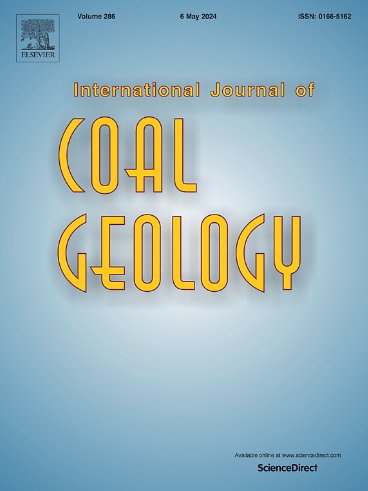Petrological, mineralogical, and geochemical study of pyrometamorphic rocks in the northeast margin of Ordos Basin, China: Insight into high-temperature coal combustion events
IF 5.7
2区 工程技术
Q2 ENERGY & FUELS
引用次数: 0
Abstract
Coal combustion and coal fires occur globally, and pyrometamorphic rocks produced by coal combustion and coal fires are widely distributed in the northeastern Ordos Basin, China. Studies on the characteristics and genetic environment of pyrometamorphic rocks within the study area remain limited. In this light, the paper explored the petrological, mineralogical, and geochemical properties of pyrometamorphic rocks in the northeast margin of Ordos Basin, China. Macroscopic features and petrology were examined through fieldwork and optical microscopy. SEM-EDS (Scanning Electron Microscope-Energy Dispersive Spectrometer) and XRD (X-ray diffraction) analysis provided detailed mineralogical information. Major and trace elements, including rare earth elements (REE), were quantified using ICP-OES (Inductively Coupled Plasma Optical Emission Spectrometry) and ICP-MS (Inductively Coupled Plasma Mass Spectrometry), respectively. The results indicate two types of pyrometamorphic rocks consisting of clinkers and paralavas. Typical high-temperature minerals such as tridymite, cristobalite, mullite, cordierite, sekaninaite, hematite, and magnetite were detected in clinkers and paralavas. Large ion lithophile elements such as Rb, Sr, Cs and Ba vary greatly in pyrometamorphic rocks, which may be caused by heating. Both the clinkers and paralavas show Se, As, Mo, Sn, and Tl anomalies, indicative of hydrothermal activities following the pyrometamorphic event. The clinkers appear enriched in LREE, while the paralavas exhibit enrichment in HREE. REE distribution patterns normalized to UCC (upper continental crust) display no apparent δCe and δEu anomalies in clinkers and paralavas. This study contributes to the understanding of pyrometamorphic rocks by providing new insights into their genesis and high-temperature formation conditions.

中国鄂尔多斯盆地东北缘火成岩的岩石学、矿物学和地球化学研究:洞察高温燃煤事件
煤燃烧和煤火在全球范围内都有发生,煤燃烧和煤火产生的热变质岩在鄂尔多斯盆地东北部分布广泛。研究区内热变质岩特征及成因环境的研究仍然有限。在此基础上,对鄂尔多斯盆地东北缘热变质岩的岩石学、矿物学和地球化学特征进行了探讨。通过野外考察和光学显微镜检查了其宏观特征和岩石学特征。SEM-EDS(扫描电子显微镜-能量色散光谱仪)和XRD (x射线衍射)分析提供了详细的矿物学信息。采用电感耦合等离子体发射光谱法(ICP-OES)和电感耦合等离子体质谱法(ICP-MS)分别对样品中的主要元素和微量元素(包括稀土元素)进行定量分析。结果表明,热变质岩分为熟料岩和副变质岩两类。在熟料和废渣中检出了典型的高温矿物,如钇铝石、方英石、莫来石、堇青石、绢铁铁矿、赤铁矿和磁铁矿。热变质岩中Rb、Sr、Cs、Ba等大离子亲石元素变化较大,这可能是加热所致。熟料和残岩均显示Se、As、Mo、Sn和Tl异常,表明热变质事件后存在热液活动。熟料表现为轻稀土富集,副渣表现为重稀土富集。稀土元素分布模式归一化到UCC(上陆地壳),在熟料和副碎屑中没有明显的δCe和δEu异常。该研究为热变质岩的成因和高温形成条件提供了新的认识。
本文章由计算机程序翻译,如有差异,请以英文原文为准。
求助全文
约1分钟内获得全文
求助全文
来源期刊

International Journal of Coal Geology
工程技术-地球科学综合
CiteScore
11.00
自引率
14.30%
发文量
145
审稿时长
38 days
期刊介绍:
The International Journal of Coal Geology deals with fundamental and applied aspects of the geology and petrology of coal, oil/gas source rocks and shale gas resources. The journal aims to advance the exploration, exploitation and utilization of these resources, and to stimulate environmental awareness as well as advancement of engineering for effective resource management.
 求助内容:
求助内容: 应助结果提醒方式:
应助结果提醒方式:


